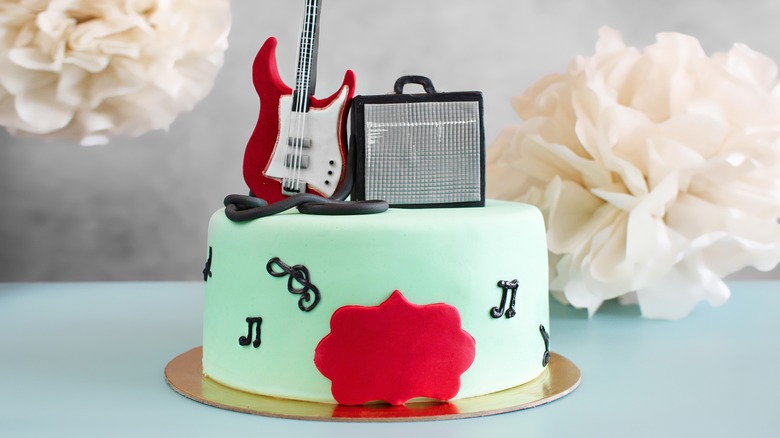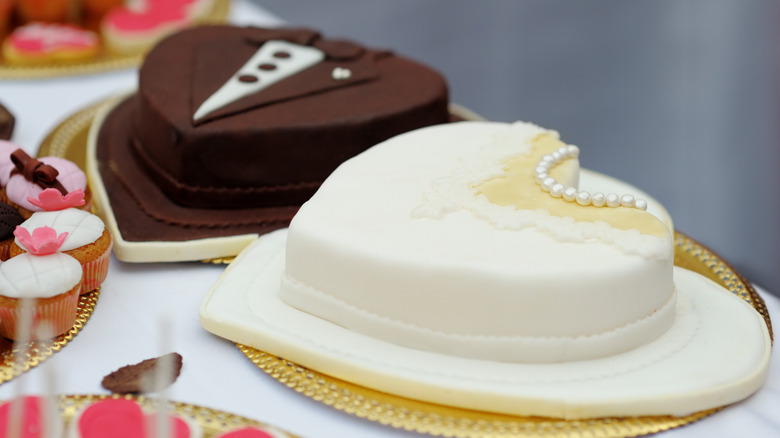The Origins Of Groom's Cakes
Historically, a wedding cake is the epitome of "sugar and spice, and everything nice" — towering confections that bring to life the romance of a fairy-tale castle or the ethereal perfection of a Victorian garden. True, 21st-century couples are taking liberties with tradition and opting instead for unique designs or towers of cupcakes, sometimes accompanied by a smaller confection for the traditional cake-cutting ceremony, but even at the most formal wedding, there's one element where the rule is: there are no rules. We're talking about the groom's cake, the sometimes tongue-in-cheek creation decorated to represent the groom's hobby, profession, or even an inside joke between the betrothed.
While groom's cakes have long enjoyed a following in the southern U.S., the practice actually dates to 19th-century England when Victorian-era nuptials typically featured three cakes — one for the guests and one for the bride and bridesmaids. And another denser (and probably alcohol-laced) cake for the groom and groomsmen — the kind of cake that would fit right into an old-world gentlemen's club from the same era; cigars, brandy, wood-paneled walls, and well-worn leather wing chairs. Sometimes the groom's cake was served alongside the formal cake, giving guests a choice of dessert. It could also be sliced and distributed to guests as a party favor. Then there's the legend about single women who would slip a piece of the cake under their pillows and dream of their own nuptials.
What comes round, goes round
In the U.S., the idea of the groom's cake didn't catch on until the 20th century, and even then, it was seldom seen outside the South. The 1989 set-in-Louisiana movie "Steel Magnolias" introduced groom's cakes to a broader audience (we're still not sure why it was shaped like an armadillo), but it's only in the past decade or so that groom's cakes have become more common nationwide.
Some wedding watchers credit Prince William and Kate Middleton's decision to have a groom's cake at their 2011 wedding with igniting a more widespread interest in the practice. While the prince opted for a straightforward family favorite, a chocolate biscuit cake, the confection is typically used to convey a personal interest of the groom, like a favorite sports team or vintage movies.
And thanks to the influence of television programming like Food Network's long-running show, "Cake Boss," couples can let their imaginations run wild, secure in the knowledge that, through the magic of fondant, their baker can make their vision a reality. Football helmet? No problem. Electric guitar? You got it. Is the groom a "Star Wars" fan? How about R2D2 in a tux? As we said, when it comes to groom's cakes, the rule is, there are no rules.

